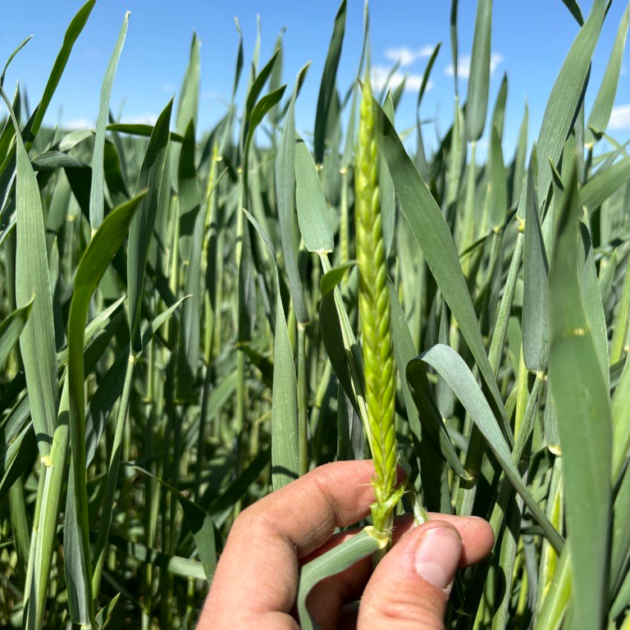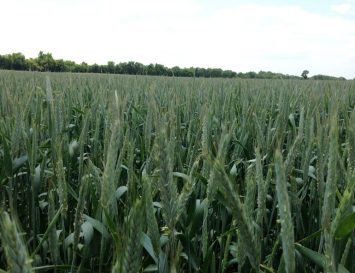


MTF 1435 (Forage Winter Wheat)
Call for price
Description
MTF 1435 is a tall, awnless hard red winter wheat cultivator developed for forage and grain production. MTF 1435 was bred as a dual-purpose hybrid for superior forage quality and yield in comparison to other winter annual small grains. It is a medium-late variety of winter wheat, which results in an extended period of vegetative growth in the spring that is correlated with higher forage quality. Forage Winter Wheat has good winter hardiness and can be used in northern climates that experience harsh winter temperatures. It is also relatively drought tolerant and can be used in dryland applications or on lighter soils. It performs best in well-drained to moderately drained soils as extended periods of standing water can result in winterkill. MTF 1435 works best in northern climates with harsh winters. It is available for sale in SD, ND, NE, MN, & IA.
Seeding Rate: 80-100 lbs/acre
Call 605.627.1901 for details and to order this variety.
Product Guide
Planting
- Planting Time: Mid – Late Fall
- Seeding Rate: 80-100 lbs/acre
- Drilled Seeding Depth: 1” – 1.5”
- Winter wheat should be planted in the fall when conditions will allow it to germinate before entering a dormant winter period in which it will vernalize.
Fertility
- Winter Wheat requires approximately 9 lbs of N, 11 lbs of P2O5, 45 lbs of K2O and 4.5 lbs of S per ton of forage produced.
- Make fertilizer applications based on expected yield and soil fertility levels.
- Apply ¼ – ½ rate of nitrogen at planting, and the remaining rate during green-up in the spring.
- Do not exceed a total of 20 lbs/a of N+K if fertilizer is placed in-furrow.
Weed Control
Plant into a clean, weed-free seedbed and consider using the herbicide options below for optimal weed control:
| Timing | Herbicide | Rate | Notes | Weeds Controlled | Control Method |
| Preplant or Preemergence | Sharpen (Saflufenacil) | 1-2 oz/a | Apply after planting and before crop emergence. | Broadleaves | Contact & Residual |
| Glyphosate** | 32 oz/a | Apply any time before crop emergence. | Grasses & Broadleaves | Contact | |
| Postemergence | Broclean (Bromoxynil) | 1.5-2 pts/a | Apply in spring after crop green up but before boot stage. | Broadleaves | Contact |
| 2,4-D Amine (3.8 lbs/gal) | 0.5-1 pt/a | Apply in spring when crop is fully tillered, but before jointing | Broadleaves | Contact | |
| Clarity, Banvel, Sterling Blue (Dicamba) | 2-4 oz/a | Apply in the spring prior to jointing | Broadleaves | Contact |
Disclaimer: All products and rates were provided by university-based sources and product labels. Always follow label instructions and consult your local chemical dealer and seed dealer before making any applications or planting the seed.
Management
- Hay or Haylage: Cut at any point from the late boot stage through the soft dough stage. Cutting earlier will result in lower yields, but higher quality forage. Forage winter wheat is awnless, so quality does not decline as rapidly with maturity as it does with other small grain forages.
- Forage winter wheat can also be utilized for grazing from late spring through early summer.






